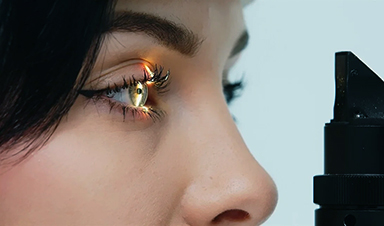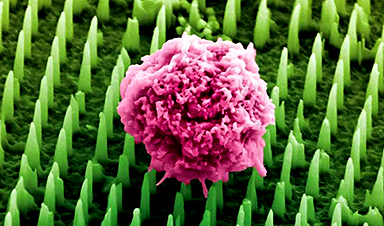In 2023, AI policy and regulation went from a niche, nerdy topic to front-page news. This is partly thanks to OpenAI’s ChatGPT, which helped AI go mainstream, but which also exposed people to how AI systems work—and don’t work. It has been a monumental year for policy: we saw the first sweeping AI law agreed upon in the European Union, Senate hearings and executive orders in the US, and specific rules in China for things like recommender algorithms.
If 2023 was the year lawmakers agreed on a vision, 2024 will be the year policies start to morph into concrete action. Here’s what to expect.
The United States
AI really entered the political conversation in the US in 2023. But it wasn’t just debate. There was also action, culminating in President Biden’s executive order on AI at the end of October—a sprawling directive calling for more transparency and new standards.
Through this activity, a US flavor of AI policy began to emerge: one that’s friendly to the AI industry, with an emphasis on best practices, a reliance on different agencies to craft their own rules, and a nuanced approach of regulating each sector of the economy differently.
Next year will build on the momentum of 2023, and many items detailed in Biden’s executive order will be enacted. We’ll also be hearing a lot about the new US AI Safety Institute, which will be responsible for executing most of the policies called for in the order.
From a congressional standpoint, it’s not clear what exactly will happen. Senate Majority Leader Chuck Schumer recently signaled that new laws may be coming in addition to the executive order. There are already several legislative proposals in play that touch various aspects of AI, such as transparency, deepfakes, and platform accountability. But it’s not clear which, if any, of these already proposed bills will gain traction next year.
What we can expect, though, is an approach that grades types and uses of AI by how much risk they pose—a framework similar to the EU’s AI Act. The National Institute of Standards and Technology has already proposed such a framework that each sector and agency will now have to put into practice, says Chris Meserole, executive director of the Frontier Model Forum, an industry lobbying body.
Another thing is clear: the US presidential election in 2024 will color much of the discussion on AI regulation. As we see in generative AI’s impact on social media platforms and misinformation, we can expect the debate around how we prevent harms from this technology to be shaped by what happens during election season.
Europe
The European Union has just agreed on the AI Act, the world’s first sweeping AI law.
After intense technical tinkering and official approval by European countries and the EU Parliament in the first half of 2024, the AI Act will kick in fairly quickly. In the most optimistic scenario, bans on certain AI uses could apply as soon as the end of the year.
This all means 2024 will be a busy year for the AI sector as it prepares to comply with the new rules. Although most AI applications will get a free pass from the AI Act, companies developing foundation models and applications that are considered to pose a “high risk” to fundamental rights, such as those meant to be used in sectors like education, health care, and policing, will have to meet new EU standards. In Europe, the police will not be allowed to use the technology in public places, unless they get court approval first for specific purposes such as fighting terrorism, preventing human trafficking, or finding a missing person.
Other AI uses will be entirely banned in the EU, such as creating facial recognition databases like Clearview AI’s or using emotion recognition technology at work or in schools. The AI Act will require companies to be more transparent about how they develop their models, and it will make them, and organizations using high-risk AI systems, more accountable for any harms that result.
Companies developing foundation models—the models upon which other AI products, such as GPT-4, are based—will have to comply with the law within one year of the time it enters into force. Other tech companies have two years to implement the rules.
To meet the new requirements, AI companies will have to be more thoughtful about how they build their systems, and document their work more rigorously so it can be audited. The law will require companies to be more transparent about how their models have been trained and will ensure that AI systems deemed high-risk are trained and tested with sufficiently representative data sets in order to minimize biases, for example.
The EU believes that the most powerful AI models, such as OpenAI’s GPT-4 and Google’s Gemini, could pose a “systemic” risk to citizens and thus need additional work to meet EU standards. Companies must take steps to assess and mitigate risks and ensure that the systems are secure, and they will be required to report serious incidents and share details on their energy consumption. It will be up to companies to assess whether their models are powerful enough to fall into this category.
Open-source AI companies are exempted from most of the AI Act’s transparency requirements, unless they are developing models as computing-intensive as GPT-4. Not complying with rules could lead to steep fines or cause their products to be blocked from the EU.
The EU is also working on another bill, called the AI Liability Directive, which will ensure that people who have been harmed by the technology can get financial compensation. Negotiations for that are still ongoing and will likely pick up this year.
Some other countries are taking a more hands-off approach. For example, the UK, home of Google DeepMind, has said it does not intend to regulate AI in the short term. However, any company outside the EU, the world’s second-largest economy, will still have to comply with the AI Act if it wants to do business in the trading bloc.
Columbia University law professor Anu Bradford has called this the “Brussels effect”—by being the first to regulate, the EU is able to set the de facto global standard, shaping the way the world does business and develops technology. The EU successfully achieved this with its strict data protection regime, the GDPR, which has been copied everywhere from California to India. It hopes to repeat the trick when it comes to AI.
China
So far, AI regulation in China has been deeply fragmented and piecemeal. Rather than regulating AI as a whole, the country has released individual pieces of legislation whenever a new AI product becomes prominent. That’s why China has one set of rules for algorithmic recommendation services (TikTok-like apps and search engines), another for deepfakes, and yet another for generative AI.
The strength of this approach is it allows Beijing to quickly react to risks emerging from the advances in technology—both for the users and for the government. But the problem is it prevents a more long-term and panoramic perspective from developing.
That could change next year. In June 2023, China’s state council, the top governing body, announced that “an artificial intelligence law” is on its legislative agenda. This law would cover everything—like the AI Act for Europe. Because of its ambitious scope, it’s hard to say how long the legislative process will take. We might see a first draft in 2024, but it might take longer. In the interim, it won’t be surprising if Chinese internet regulators introduce new rules to deal with popular new AI tools or types of content that emerge next year.
So far, very little information about it has been released, but one document could help us predict the new law: scholars from the Chinese Academy of Social Sciences, a state-owned research institute, released an “expert suggestion” version of the Chinese AI law in August. This document proposes a “national AI office” to oversee the development of AI in China, demands a yearly independent “social responsibility report” on foundation models, and sets up a “negative list” of AI areas with higher risks, which companies can’t even research without government approval.
Currently, Chinese AI companies are already subject to plenty of regulations. In fact, any foundation model needs to be registered with the government before it can be released to the Chinese public (as of the end of 2023, 22 companies have registered their AI models).
This means that AI in China is no longer a Wild West environment. But exactly how these regulations will be enforced remains uncertain. In the coming year, generative-AI companies will have to try to figure out the compliance reality, especially around safety reviews and IP infringement.
At the same time, since foreign AI companies haven’t received any approval to release their products in China (and likely won’t in the future), the resulting domestic commercial environment protects Chinese companies. It may help them gain an edge against Western AI companies, but it may also stifle competition and reinforcing China’s control of online speech.
The rest of the world
We’re likely to see more AI regulations introduced in other parts of the world throughout the next year. One region to watch will be Africa. The African Union is likely to release an AI strategy for the continent early in 2024, meant to establish policies that individual countries can replicate to compete in AI and protect African consumers from Western tech companies, says Melody Musoni, a policy officer at the European Centre for Development Policy Management.
Some countries, like Rwanda, Nigeria, and South Africa, have already drafted national AI strategies and are working to develop education programs, computing power, and industry-friendly policies to support AI companies. Global bodies like the UN, OECD, G20, and regional alliances have started to create working groups, advisory boards, principles, standards, and statements about AI. Groups like the OECD may prove useful in creating regulatory consistency across different regions, which could ease the burden of compliance for AI companies.
Geopolitically, we’re likely to see growing differences between how democratic and authoritarian countries foster—and weaponize—their AI industries. It will be interesting to see to what extent AI companies prioritize global expansion or domestic specialization in 2024. They might have to make some tough decisions.
News
Scientists discover cancer-fighting bacteria that ‘soak up’ forever chemicals in the body
A family of healthy bacteria may help 'soak up' toxic forever chemicals in the body, warding off their cancerous effects. Forever chemicals, also known as PFAS (per- and polyfluoroalkyl substances), are toxic chemicals that [...]
Johns Hopkins Researchers Uncover a New Way To Kill Cancer Cells
A new study reveals that blocking ribosomal RNA production rewires cancer cell behavior and could help treat genetically unstable tumors. Researchers at the Johns Hopkins Kimmel Cancer Center and the Department of Radiation Oncology and Molecular [...]
AI matches doctors in mapping lung tumors for radiation therapy
In radiation therapy, precision can save lives. Oncologists must carefully map the size and location of a tumor before delivering high-dose radiation to destroy cancer cells while sparing healthy tissue. But this process, called [...]
Scientists Finally “See” Key Protein That Controls Inflammation
Researchers used advanced microscopy to uncover important protein structures. For the first time, two important protein structures in the human body are being visualized, thanks in part to cutting-edge technology at the University of [...]
AI tool detects 9 types of dementia from a single brain scan
Mayo Clinic researchers have developed a new artificial intelligence (AI) tool that helps clinicians identify brain activity patterns linked to nine types of dementia, including Alzheimer's disease, using a single, widely available scan—a transformative [...]
Is plastic packaging putting more than just food on your plate?
New research reveals that common food packaging and utensils can shed microscopic plastics into our food, prompting urgent calls for stricter testing and updated regulations to protect public health. Beyond microplastics: The analysis intentionally [...]
Aging Spreads Through the Bloodstream
Summary: New research reveals that aging isn’t just a local cellular process—it can spread throughout the body via the bloodstream. A redox-sensitive protein called ReHMGB1, secreted by senescent cells, was found to trigger aging features [...]
AI and nanomedicine find rare biomarkers for prostrate cancer and atherosclerosis
Imagine a stadium packed with 75,000 fans, all wearing green and white jerseys—except one person in a solid green shirt. Finding that person would be tough. That's how hard it is for scientists to [...]
Are Pesticides Breeding the Next Pandemic? Experts Warn of Fungal Superbugs
Fungicides used in agriculture have been linked to an increase in resistance to antifungal drugs in both humans and animals. Fungal infections are on the rise, and two UC Davis infectious disease experts, Dr. George Thompson [...]
Scientists Crack the 500-Million-Year-Old Code That Controls Your Immune System
A collaborative team from Penn Medicine and Penn Engineering has uncovered the mathematical principles behind a 500-million-year-old protein network that determines whether foreign materials are recognized as friend or foe. How does your body [...]
Team discovers how tiny parts of cells stay organized, new insights for blocking cancer growth
A team of international researchers led by scientists at City of Hope provides the most thorough account yet of an elusive target for cancer treatment. Published in Science Advances, the study suggests a complex signaling [...]
Nanomaterials in Ophthalmology: A Review
Eye diseases are becoming more common. In 2020, over 250 million people had mild vision problems, and 295 million experienced moderate to severe ocular conditions. In response, researchers are turning to nanotechnology and nanomaterials—tools that are transforming [...]
Natural Plant Extract Removes up to 90% of Microplastics From Water
Researchers found that natural polymers derived from okra and fenugreek are highly effective at removing microplastics from water. The same sticky substances that make okra slimy and give fenugreek its gel-like texture could help [...]
Instant coffee may damage your eyes, genetic study finds
A new genetic study shows that just one extra cup of instant coffee a day could significantly increase your risk of developing dry AMD, shedding fresh light on how our daily beverage choices may [...]
Nanoneedle patch offers painless alternative to traditional cancer biopsies
A patch containing tens of millions of microscopic nanoneedles could soon replace traditional biopsies, scientists have found. The patch offers a painless and less invasive alternative for millions of patients worldwide who undergo biopsies [...]
Small antibodies provide broad protection against SARS coronaviruses
Scientists have discovered a unique class of small antibodies that are strongly protective against a wide range of SARS coronaviruses, including SARS-CoV-1 and numerous early and recent SARS-CoV-2 variants. The unique antibodies target an [...]





















